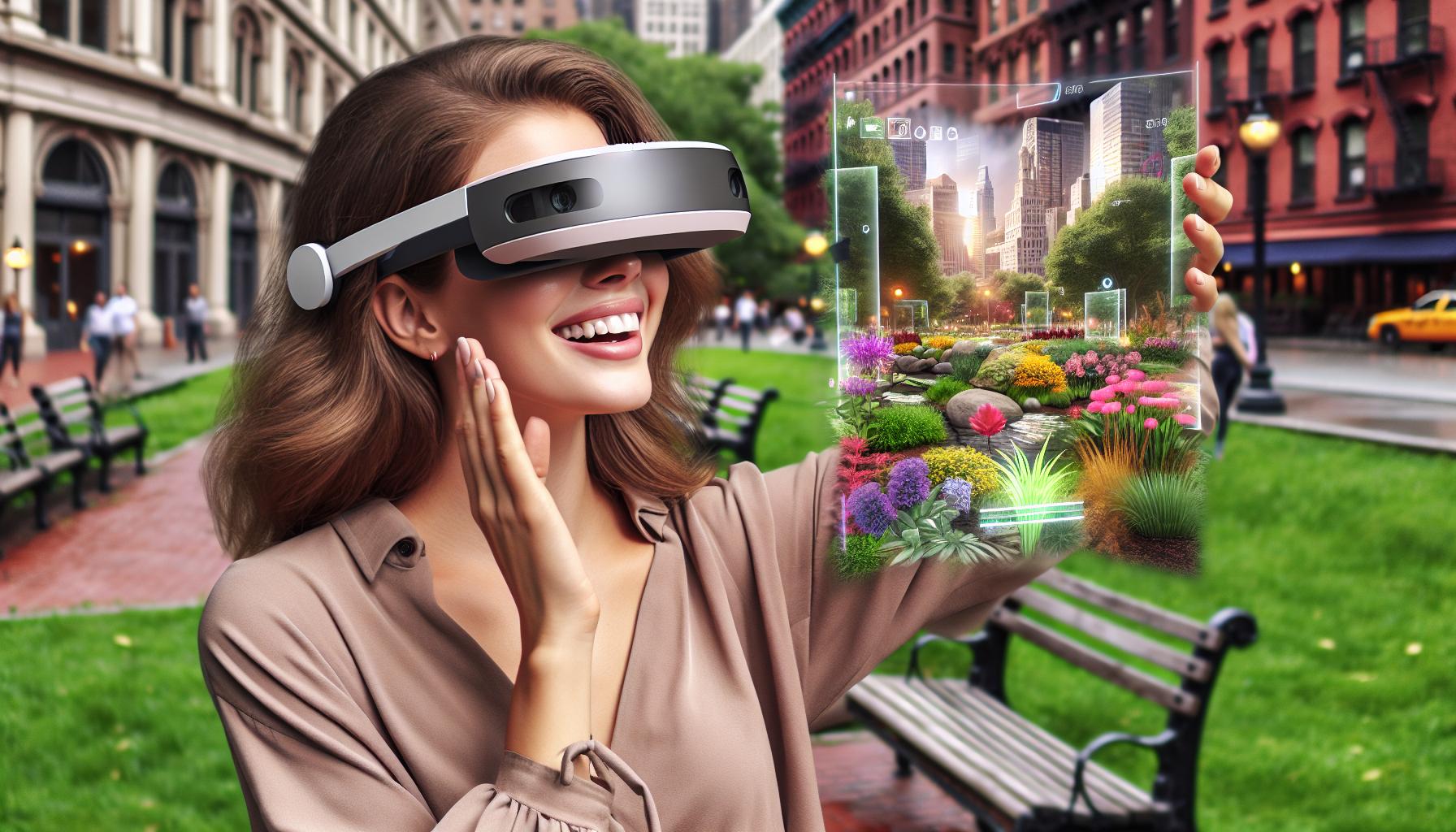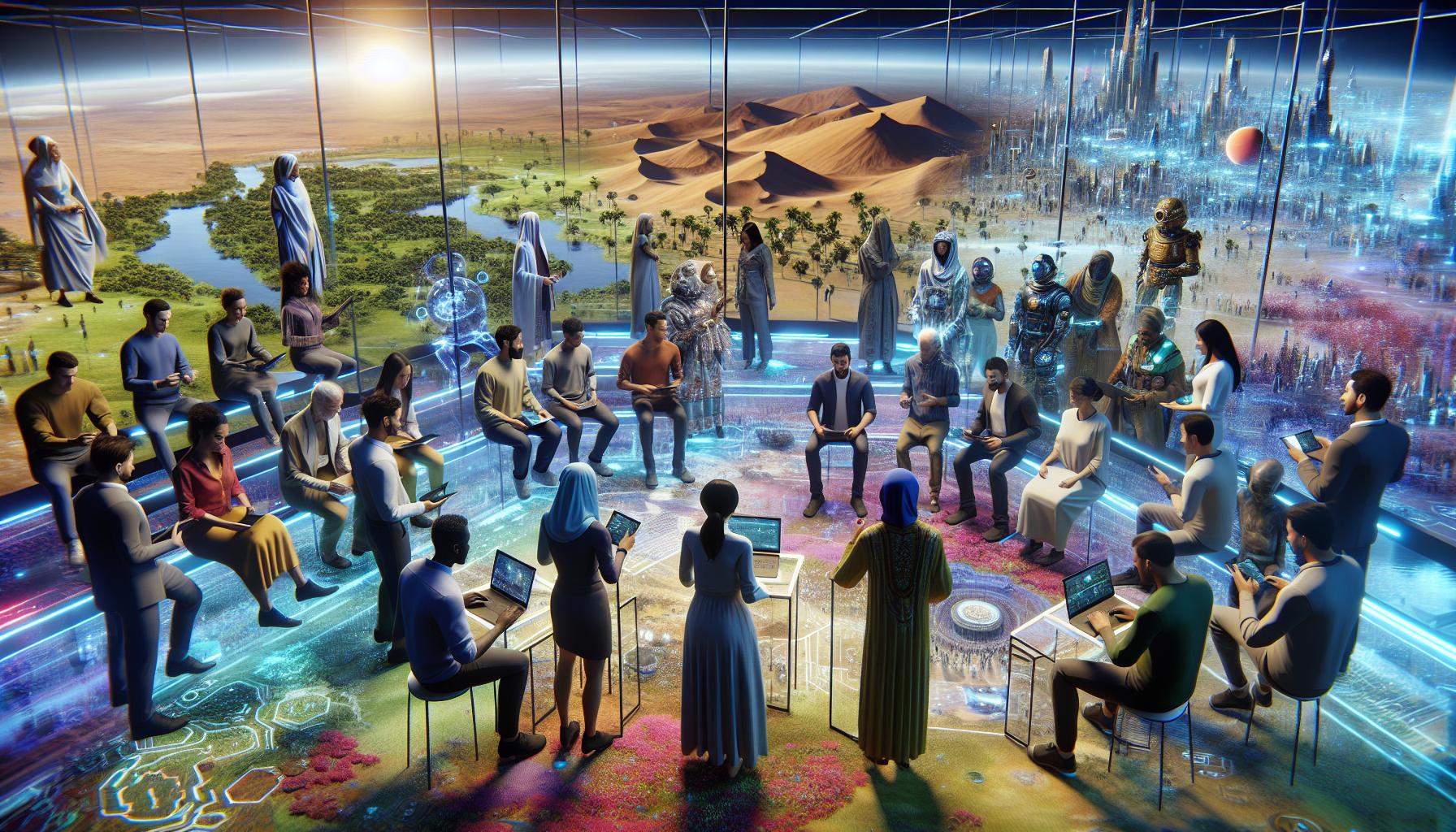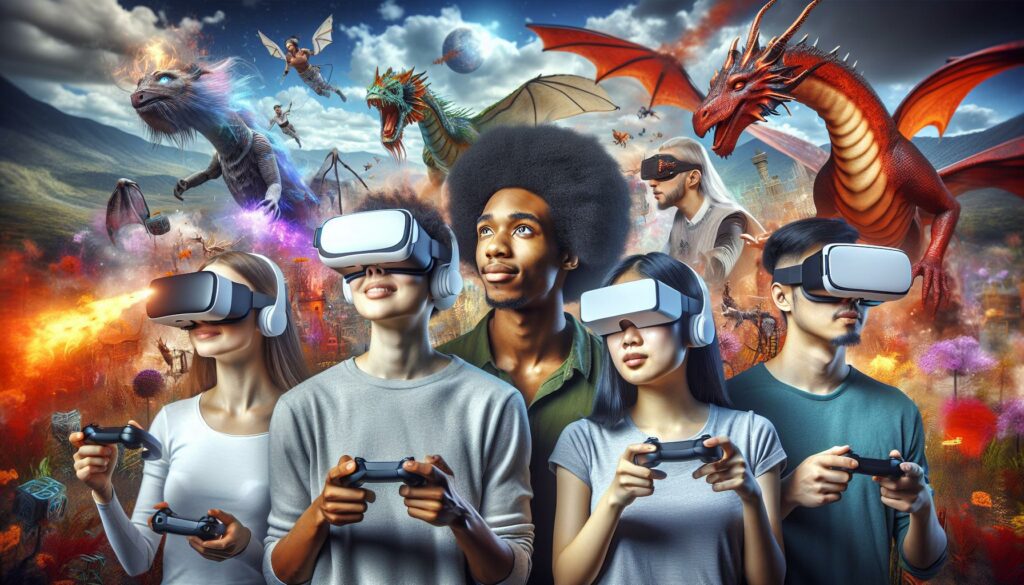The internet isn’t just a place for cat videos and endless scrolling anymore. It’s evolved into a dazzling playground of virtual reality, augmented reality, and immersive 3D environments. Imagine slipping on a headset and finding yourself in a world where you can battle dragons or explore the depths of the ocean—all while sitting on your couch in your pajamas.
The Internet Includes Virtual Reality, Augmented Reality, and 3D Environments
The internet includes virtual reality, augmented reality, and 3d environments., incorporating virtual reality (VR), augmented reality (AR), and 3D environments. VR immerses users completely within a digital landscape, allowing for activities like space exploration or virtual meetings. AR enhances the real world by overlaying digital information onto physical surroundings, exemplified by mobile apps that provide interactive elements.
3D environments create detailed virtual spaces for users to explore, offering experiences that simulate real-life scenarios. These environments support various applications, from gaming to education, providing interactive learning opportunities. Enhanced engagement occurs as users navigate realistically rendered settings, interacting with objects and participants.
Applications utilizing these technologies are growing rapidly. Businesses leverage AR for marketing strategies, enhancing customer engagement through interactive experiences. Educational institutions incorporate VR for immersive learning, enriching students’ understanding of complex subjects like science or history.
Collaboration tools now frequently employ AR and VR. Teams spread across the globe can meet in virtual workspaces, engaging with shared projects in real-time. This accessibility promotes teamwork and increases productivity.
The integration of VR, AR, and 3D environments reshapes how individuals connect, engage, and learn. The potential applications continue to expand, influencing various industries and daily activities. Continuous technological advancements promise further enhancement of user experiences, bringing innovative opportunities to become part of this evolving digital landscape.
The Rise of Virtual Reality

Virtual reality (VR) has gained immense popularity, transforming how individuals interact with the digital world. Creating immersive experiences, it allows users to escape reality and engage in virtual environments.
Key Features of Virtual Reality
Immersion stands out as a key feature, providing users with a sense of presence in a virtual landscape. Interaction plays an equally important role, enabling participants to manipulate elements within that space. Real-time feedback enhances this experience, responding to user actions instantly and creating a seamless connection between the user and the virtual environment. Furthermore, VR often includes spatial audio, making the surroundings feel more realistic. These features combine to captivate audiences, leaving lasting impressions with every interaction.
Applications in Various Industries
VR finds applications across numerous sectors, showcasing its versatility. In education, immersive learning environments engage students and enhance their comprehension. Aviation training employs VR to simulate flight scenarios, allowing pilots to practice without risks. The internet includes virtual reality, augmented reality, and 3d environments. utilizes virtual simulations for surgical training and patient therapy sessions. Entertainment experiences, such as gaming and virtual concerts, captivate audiences with immersive storytelling. Companies leverage VR for market research, providing consumers with product interactions before purchasing. These diverse applications demonstrate VR’s potential, redefining experiences in multiple fields.
Understanding Augmented Reality

Augmented reality (AR) enhances users’ perception of the real world by overlaying digital objects onto physical environments. It transforms ordinary experiences into interactive ones, allowing for rich interactions that blend virtual elements with reality.
Differences Between AR and VR
AR differs from virtual reality (VR) in several key aspects. First, AR supplements the real world, while VR creates entirely immersive environments. AR users remain aware of their surroundings, which fosters a unique interaction with their physical space. In contrast, VR completely immerses users, blocking out the real world. AR applications often use smartphones or AR glasses, making technology accessible for everyday use. By retaining elements of the physical world, AR enhances real-time experiences, such as navigating through cities or trying on virtual clothes.
Popular AR Technologies
Numerous technologies support the growth of AR. Google Glass exemplifies wearables that blend digital visuals with reality, aiding productivity and information access. Microsoft HoloLens offers immersive experiences, allowing users to interact with holograms in their environments. Applications like Pokémon GO reflect how AR integrates gaming with real-world exploration by encouraging players to explore their surroundings. Snapchat filters showcase simple yet impactful AR features used for fun and social engagement. These technologies highlight AR’s diverse applications in education, marketing, and more, driving further innovation in the field.
Exploring 3D Environments

3D environments play a crucial role in shaping online experiences by offering users a sense of presence and engagement. These digital spaces allow individuals to interact with richly detailed worlds, deepening their connection to content. Immersive 3D environments enhance user satisfaction, driving prolonged engagement with educational content and interactive applications. They encourage exploration, fostering curiosity and facilitating hands-on learning experiences.
Importance in Online Experiences
Engaging with 3D environments significantly enhances the overall quality of online interactions. Users perceive reality and digital stimuli more organically, promoting an intuitive understanding of complex concepts. Immersive experiences stimulate emotional responses, creating memorable moments that resonate with audiences. These digital scenarios also promote social interactions, enabling connections between users in shared virtual spaces. Enhanced navigation and interactivity improve usability, making content more accessible and appealing.
Use Cases in Gaming and Education
Gaming benefits immensely from 3D environments by providing players with interactive and expansive worlds to explore. Players can embark on adventures, engage with intricate narratives, and collaborate with others in real time, enhancing their gaming experiences. In education, 3D environments create valuable learning opportunities that transform how students grasp difficult subjects. Virtual science labs allow students to conduct experiments safely while history lessons immerse them in realistic reconstructions of historical events. These applications lead to improved retention and understanding, fostering a more engaging educational atmosphere.
The Future of Immersive Technologies
Emerging technologies like virtual reality (VR) and augmented reality (AR) promise to reshape the digital landscape significantly. VR continues to gain traction across various sectors, with its applications ranging from education to entertainment. Companies such as Meta and Google invest heavily in enhancing this technology, bringing immersive experiences closer to everyday users.
Developers design AR applications to enrich real-life experiences. Enhanced retail experiences and interactive advertisements offer consumers a glimpse of how products fit into their lives. Notably, AR tools like Microsoft HoloLens expand training possibilities in fields like healthcare and engineering.
Gaming represents a primary commercial driver for immersive technologies, with studios creating compelling 3D environments. Players dive into richly detailed worlds that foster collaboration, competition, and story engagement. Real-time interactions between players elevate emotional investment and satisfaction.
Educational institutions increasingly adopt immersive technologies. Virtual field trips allow students to explore archaeological sites or outer space, fostering curiosity and enhancing learning. Teachers utilize VR to replicate experiments safely, providing hands-on experiences that support retention.
Developments in hardware further fuel the growth of 3D environments. Headsets and smart glasses become more affordable and user-friendly, encouraging adoption among a broader audience. As accessibility improves, individuals from various backgrounds experience the benefits of immersive technologies.
Incorporating artificial intelligence augments these immersive experiences even further. AI-driven systems adapt content based on user interactions, creating unique and personalized journeys. With continuous advancements, immersive technologies stand poised to redefine how people interact with digital content.
The intersection of VR, AR, and 3D environments signals an exciting future for online experiences. Businesses, educational institutions, and creatives explore innovative applications, establishing immersive technologies as integral components of digital interaction.
The integration of virtual reality augmented reality and 3D environments marks a pivotal shift in how users engage with the internet. These technologies not only enhance entertainment but also revolutionize education and business practices. As immersive experiences become more accessible the potential for innovation continues to expand.
With ongoing advancements in hardware and software the future promises even more captivating interactions. Companies are keen to explore these possibilities creating a digital landscape where creativity collaboration and learning thrive. Embracing these technologies is essential for those looking to stay ahead in an increasingly digital world.

